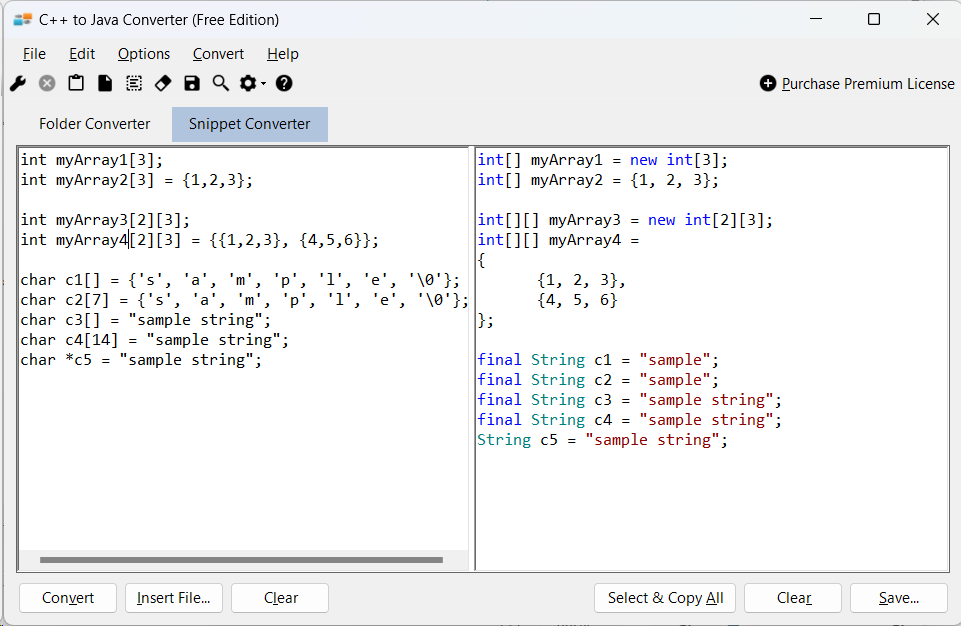

If it returns false, the key is no longer valid and the loop can exit. When an event occurs, the key is signaled and placed into the watcher's queue. After processing its events, we need to put it back into a ready state by invoking its reset() method. And at last, we implement an infinite loop to wait for incoming events.Next, we register a Path instance for the folder to be monitored with the types of events that we are interested in.The first step is to create a new WatchService by using the newWatchService() method of the FileSystem class.When the service detects an event of interest, it is forwarded to the registered process and handled as needed. When registering, we tell the service which types of events we are interested in: file creation, file modification, or file deletion. It enables us to register a folder with the watch service. The package provides a file change notification API, called the Watch Service API. 1 Answer Sorted by: 2 You can set the values in a property file and modify it on every system. Writing to a file : FileWriter class is used with its write(). In the above example, we use the touch method to create a file.Learn more about watching files with Java NIO. PrintWriter out new PrintWriter(oceans.txt) out.println(Atlantic) out.close() public static void main(String. File Handling in Java Creating a new file : createNewFile() method is used to create a new file. If you don’t want to use standard libraries provided out of the box from Java, you can use FileUtils class from Apache Commons import .FileUtils įile myFile = new File("src/test/resources/newFile.txt") parenthood: Ron DeSantis plays the family card against Trump.
#Java new file code
The above code example assumes the path src/test/resources already exists. Path newFilePath = Paths.get("src/test/resources/newFile.txt") I did not have C:homeSFTWRjdk1.6.021bin in the path at all before and I did have C:Program Files (x86)Javajre6bin. Creating files via the new nio package is the preferred option as the API is more intuitive. 27 Finally got it: The way Eclipse picks up the JRE is using the systems PATH.

In order to create a file with the nio package, we first need to set the path and then use the createFile() method from Files class. In the following example, we will use java.nio package which was introduced in JDK 7. If the file exists with content, if we pass false as the parameter to the fileOutputStream method, it will overwrite the file and the content will be lost! Create File with java.nio Package NOTE: Be careful when using fileOutputStream. Explanation: To create a new file using java language, the File class is used here. A named location used to store related information is known as a File.There are several File Operations like creating a new File, getting information about File, writing into a File, reading from a File and deleting a File. If the file exists, passing true will just append content to it. File ( String parent, String child) Creates a new File instance from a parent pathname string and a child pathname string. Discuss Courses Practice The listFiles () method is a part of File class.The function returns an array of Files denoting the files in a given abstract pathname if the path name is a directory else returns null. In Java, a File is an abstract data type. If the file doesn’t exist, the above method will create it. New FileOutputStream("newFile.txt", true) It’s important to note that this is mostly used to create a file and write content to it in one go.
#Java new file how to
How to get current working directory in Java.NOTE: The above example creates an empty file in the provided location. import java.io.File įile file = new File("c://examples//newFile.txt") It returns false if the file already exists, or true if created. In the first example, we will use createNewFile() method from the java.io.file class. We also look at creating a file with Apache Commons. These classes are provided out of the box in Java API. The examples below make use of java.io.file, java.io.fileOutputStream, and java.nio package. All we need to do is import the relevant package and use relevant methods. In this post, we’ll look at four different ways to create files in Java.


 0 kommentar(er)
0 kommentar(er)
